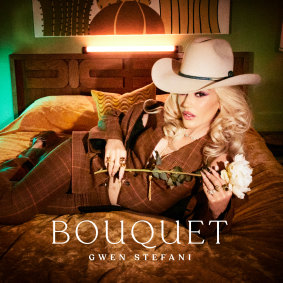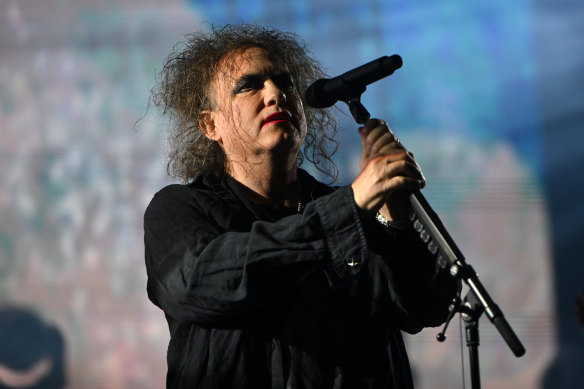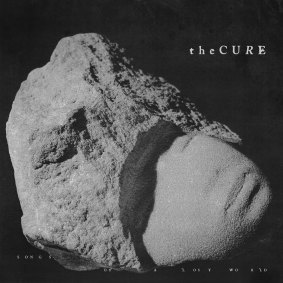
Gwen Stefani’s Bouquet: all gratitude, no attitude.
Gwen Stefani, Bouquet
It’s been a whole eight years since Gwen Stefani put out her last studio album, This Is What the Truth Feels Like. At the time, she was newly in a relationship with Blake Shelton, the country singer who she met on the set of The Voice. Both Stefani and Shelton were freshly divorced at the time of getting together, and most people wrote off their relationship as a rebound. Nearly a decade later, Stefani’s new album Bouquet is a celebration of their enduring love.
It kicks off, however, with a kiss-off. Stefani’s ex-husband, Gavin Rossdale of Bush, seems the likely target. He had been having an affair with their nanny for three years when they split in 2015, and now he’s Somebody Else’s... problem. “I pray for them, whoever they are,” sings Stefani over buoyant pads and hopeful guitar runs that offset the scornful lyrics and lend credence to her claims that “leavin’ you saved me, my God.”
The title track sees Stefani giving thanks for the safe partnership she now enjoys with Shelton, a pairing where “I drive you crazy, you drive the truck,” and “you give me everything that I wanted, I even got your last name.” It’s a far cry from the punky Stefani that was introduced to us nearly 30 years ago on Tragic Kingdom, the album that rocketed her and her ska-pop band No Doubt to fame, but maybe this is the sound of contentment.
The music on Bouquet, she says, is inspired by what she used to listen to in the family station wagon as a kid going to church — bands like Hall & Oates, Chicago, and Fleetwood Mac. After Shelton, God is the next biggest character on this record.

Steeped in yacht rock, Stefani’s Bouquet is a celebration of her enduring marriage with country star Blake Shelton. Credit: Ellen Von Unwerth
Scott Hendricks, who has worked with Shelton, Faith Hill and other country stars, was brought in to produce the record and Stefani wears a cowboy hat on its cover, but the country flavour on Bouquet is subtle, bar one track. Pretty hinges on a cutesy lyrical turn and sepia-tinted guitar lines that nod to the genre. Flowers, as you might have guessed from the album’s title, are a recurring motif. On the ballad Empty Vase, Shelton is credited with filling Stefani’s empty vase with flowers and “giving me love that I wanna get trapped in”, over gentle guitar picking and feather-light percussion.
It’s all appreciation for the most part, except for a couple of moments where the past threatens to drag Stefani “back to who I was” on Swallow My Tears and Reminders. The album closes with a duet with Shelton, Purple Irises, which references the flowers they picked and replanted that are now growing in their garden. Shelton gets the cringiest line on the record – “It’s not 2014, but you still look good in those jeans” – but the addition of his voice is welcome after hearing Gwen gush solo for the preceding eight tracks.
Stefani and her No Doubt bandmates reunited for the first time in nine years in a much anticipated set at Coachella in April. The band killed it, especially Stefani, whose voice has lost none of its power live or recorded. Her unique mezzo-soprano elevates these songs above average and the arrangements are all perfectly agreeable, but just like a three-day-old bouquet, it’s all a bit throwaway.
Stefani might be happier now, free from the heartbreak that spawned some of her best work. But 20 years after the release of her sassy solo debut Love Angel Music Baby, I’m craving a little less gratitude and a little more attitude. Annabel Ross
The Cure, Songs of a Lost World
In September, the Cure released their first new music in 16 years. The single was called Alone, and it encapsulates what makes the British band so singular and cherished: a dark, swirling six-minute symphony, half of which is a textural instrumental introduction before Robert Smith’s haunting vocals come in, sounding like he hasn’t aged a day. The song sounds like something straight off Disintegration, the Cure’s career-defining 1989 album that cemented them as founding fathers of a certain musical melancholia.

Robert Smith of The Cure performing in 2023.Credit: Getty Images
Alone was the first official taste of Songs of a Lost World, the band’s 14th studio album. The record is a gorgeous, cathartic return to what the band does best, and especially satisfying after the Cure’s last two records, 2008’s 4:13 Dream and 2004’s self-titled album, which were mutely received by critics and fans alike. Songs ... feels like classic Cure, that potent combination of heightened melodrama and emotional heft that’s contributed to their long-lasting legacy as one of the world’s great gothic rock acts.
Musically and aesthetically, the Cure operate in two distinctive and almost dialectical modes: vast, cinematic soundscapes that lean into the depths of despair to find beauty in the darkest places and the more upbeat pop singles, showing off Smith’s knack for melody and jangly guitar lines (think Friday I’m In Love, Just Like Heaven or Close to Me). There’s little of the latter on this album, which is all about texture and world. The heavy darkness is balanced out by airier tracks such as And Nothing is Forever, which begins with a simple piano and blooms into a lovely, string-drenched declaration of eternal love.

Songs of a Lost World is the Cure’s first new album in 16 years.Credit: AP
Theatrical dirges are a part of the Cure’s brand, but few have been as moving as I Can Never Say Goodbye, a six-minute tribute to Smith’s brother, Richard. Built on an eight-note piano refrain with subtle but strong bass, it’s an emotional farewell as Smith grapples with the reality of his loss: “Something wicked this way comes to steal away my brother’s life,” he laments. Smith has said that Richard’s death, as well as the loss of his parents, heavily influenced the direction of this album – their presences are felt keenly.
Slow melancholy makes way for thundering industrial darkness on Drone:Nodrone, the most urgent song on the record. A time-keeping single piano line, skittering synths, screeching guitars and pounding drums create a bed of sound for Smith to deliver his probing questions of existential crisis: “Could be a case of me displacing my reality?” he asks before answering himself a beat later: “I guess it’s more or less the way that it was meant to be.” It’s a thrilling, breakneck journey of a song, mashing genres with ease – one of the Cure’s most fascinating tracks for some time.
It wouldn’t be a Cure album without an epic closer, and Endsong does the job beautifully – a towering, synth-soaked 10-minute track that again eschews more traditional song structures for something boundless. A guitar motif recurs above the rich blanket of sound below, which expands into a dreamlike soundscape. Smith doesn’t start singing until six and a half minutes in, when the tension has built to breaking point: from there, the song maintains its trembling beauty as Smith laments the loss of a world he once loved. “Left alone with nothing at the end of every song,” he repeats as the song and album fade away.
It’s the opposite, though, really: for decades, the Cure has been making listeners feel less alone through song, and this album is a beautiful testament to their enduring power. Long may they reign. Giselle Au-Nhien Nguyen
To read more from Spectrum, visit our page here.